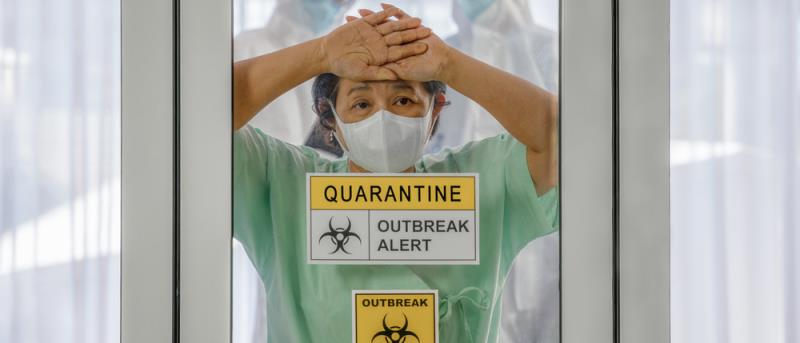
Quarantines, traffic restrictions, universal symptom surveys and other calls for social distancing are effective at containing the SARS-CoV-2 outbreak, according to a recent study.
“In this cohort study, the number of incident coronavirus disease 2019 (COVID-19) cases, rates of confirmed cases and effective reproduction number (Rt) were reduced and the outbreak was under improved control in Wuhan after implementation of multifaceted public health measures,” researchers said. This may help inform interventions worldwide.
Drawing from 32,583 individual-level data of patients with laboratory-confirmed COVID-19, the researchers looked at the impact of multifaceted public health measures on infection rates across five time periods. At the beginning of the survey period, from 8 December 2019 to 9 January 2020, when there were still no interventions in place, the daily confirmed case rate was 2.0 per million people. [JAMA 2020;doi:10.1001/jama.2020.6130]
This grew explosively to 45.9 per day per million people during the Chinese New Year Holiday, from 10 to 22 January, and even further to 162.6 per day per million people from 23 January to 1 February. By the second time interval, the only public health measures put in place were traffic restrictions and area and home quarantines.
By the fourth time period, between 2 and 16 February, centralized quarantines and treatment had already been implemented. The daily confirmed case rate then dropped to 77.9 per million people.
Beyond 16 February until the end of survey, the daily rate of confirmed cases had further decreased to 17.2 per million people. At this time interval, universal symptom surveys had been rolled out.
Healthcare workers comprised 4.6 percent of all positive cases. The daily confirmed case rate was higher in this subgroup than in the general population (130.5 vs 41.5 per million people), though the trends over time were comparable. Rates peaked during the third period (23 January to 1 February), followed by a continued decline attributable to the better availability of protective equipment during the last two periods.
This suggests that severe acute respiratory syndrome coronavirus 2 (SARS-CoV-2) carries a high risk of nosocomial transmission, the researchers said. Lower awareness and poor use of protective equipment, especially during the early stages of the outbreak, may have also driven these numbers.
Rt estimates also changed over time. Though values were largely varied during the first period, a consistent increasing trend was observed throughout the second period, from 10 to 22 January. By 24 January, Rt had peaked to 3.82 and then decreased gradually thereafter. On 6 February, Rt dropped below 1.0.
“In Wuhan, vigorous and multifaceted measures of containment, mitigation and suppression were temporally associated with improved control of the epidemic when there was neither effective drug nor vaccine,” the researchers said. “In a city with 10 million residents, mitigation measures, such as traffic restriction, cancellation of social gatherings and home quarantine, were associated with a reduction in the degree of transmission.”
“However, despite these interventions, the confirmed case rate continued to increase in the third period, perhaps in part due to shortages of pharmaceuticals and medical equipment and delayed diagnosis and access to medical treatment,” they added. “These findings may inform public health policy in other countries and regions to combat the global pandemic of COVID-19.”